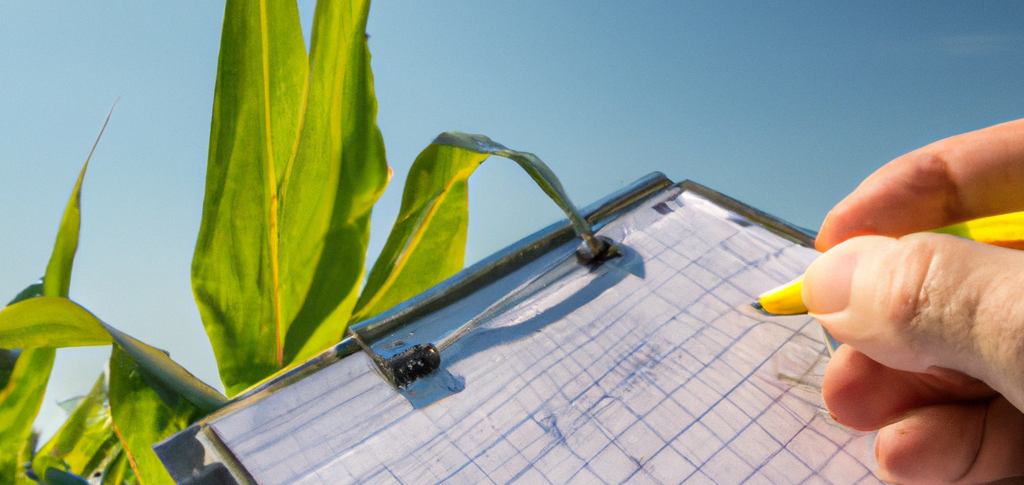A tweet I saw recently from the CGIAR highlighting the role of agronomy in increasing productivity pleasantly surprised me. Finally, deserved attention to agronomy in developing value chains and in transforming food systems! Everyone seems to take agronomy for granted in the technologies they hear are available but not adopted by farmers.
Many crop value chain analyses pay little attention to agronomic strategies to improve yields. They might note the extent to which producers are adopting or not adopting good agricultural practices—which go by the unfortunate acronym of GAPs—but rarely do they address whether the practices are good enough, and more importantly, whether they could be made even better. Plant scientists in public and private organizations might pay attention but the absence of adequate understanding and concern among practitioners—agricultural ministries and the aid community—who allocate resources may be impeding the supply of critical agronomic information to farmers.
In Ghana, a nearly-two-decade-old blanket recommendation to apply two bags of complex fertilizers and a bag of nitrogenous fertilizers per acre of maize still rules. No new recommendations have been developed and disseminated for the many new varieties that the country has released in recent years. Varieties respond differently to practices—in the capacity to turn the nutrients applied in the form of fertilizers into yields, for example.
When and how farmers plant a crop, the plant population they achieve, the quantity of fertilizers they apply, and when they apply in relation crop growth stage all bear upon how much they harvest. These factors become critical particularly when crops are raised depending solely on rainfall. That is where agronomy comes in. Plant scientists identify the practices that farmers should follow through experiments and extensive trails under different conditions—well-resourced farmers do some of this on their own. A bit of economic calculations that they make based on the findings also suggest whether the practices lead to significantly higher yields to encourage farmers to adopt them. Meeting the current challenges of making agriculture climate smart or resilient, which is primarily about persuading farmers to change their practices to suit the changed conditions, also requires a lot of agronomy.
The culprit that demands a lot of agronomy is the spatial variation in conditions, such as rainfall and soil fertility. The extent of rainfall diversity struck me while working at ICRISAT when someone told me that rainfall patterns varied within the campus. The campus, about 1,400 ha or more than 3 km across, is not small but it still surprised me. The optimal time for planting a short duration variety that is expected to do well under rainfed conditions would be different in locations with different rainfall patterns.
Soil conditions vary even more than rainfall. Farmers need to adapt generic fertilizer recommendations to their soil conditions. When we surveyed nearly one hundred tomato growers in northern Ghana, we promised to test their soils to reward them for participating in the survey. With the help of a scientist from the local research station, we used the results to demonstrate to them how by being precise in applying fertilizers based on the test results they could save money—many of them were applying more potassium than was needed. In many cases, they could have saved more than enough to pay for the soil tests.
Precision agriculture, which is associated with spatial information and application technologies, seems to enthrall practitioners more than agronomy because it seems more modern than the mundane agronomic work. But the low-tech agronomy delivers precision to smallholders to help them get the most from what they invest in good seeds and fertilizers.
The need for agronomy may not be adequately felt among practitioners because many attribute farmers’ reluctance to adopt good practices to their inability to make rational decisions—ignoring the possibility that the practices may not be precise enough for their conditions to benefit them adequately. They accuse farmers of not “managing their farming as a business.” Many agricultural projects routinely train farmers in bookkeeping as though they couldn’t recognize the profitability of a crop without maintaining books. Farmers may not be precise but they do work with sensible thumb rules. A fertilizer dealer in Ghana told us that many of his customers think that applying fertilizer to maize is profitable only if the cost of a bag of fertilizers is one half of the price they receive for a bag of maize.
The systems that deliver agronomy have fallen apart. CGIAR promises to deliver the information farmers need, but that needs to be done by local research centres and the ministries. In the absence of private enterprises, such as seed and fertilizer companies, large enough to invest in trials, the responsibility of bringing precision to good practices falls on poorly funded public systems. We plan to include auditing the state of technologies at all levels in value chains as an important aspect of strategizing to develop chains. Identifying the potential to upgrade the technologies to become more competitive and thinking through the strategies to encourage members to innovate along the chain would be important aspects.
